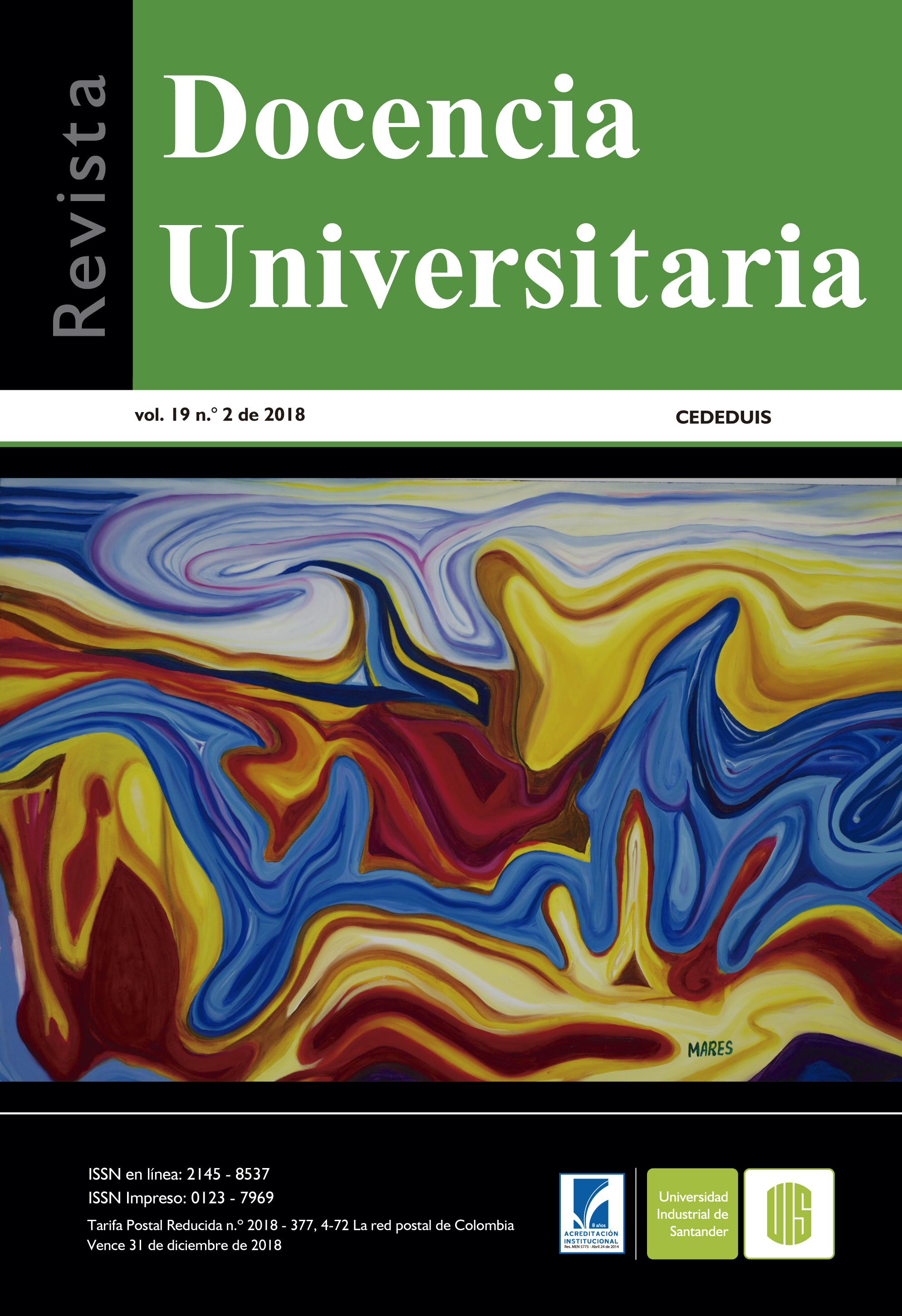The autonomy of learning: The case of the Business Technology program in the town of San Alberto, Cesar
Published 2018-12-28
Keywords
- autonomy,
- open education,
- distance learning,
- mental development,
- learning
How to Cite
Abstract
This article refers to a mixed methods research, case study, which was carried out with the intention of looking into the development of autonomous learning abilities by students of the Business Technology program in the town of San Alberto, Cesar, from 2017 to 2018. The sample was nine students per subject: Research Methodology, Human Development, and Knowledge Management. For the study and data collection, interviews, questionnaires, direct observation, and bibliographic review were used.
In the analysis, we perceived the medium-low number of apprentices with autonomous skills and the absence of integral autonomy in their studies. The main lack refers to the low knowledge about Distance Learning (EaD according to its initials in Spanish) when they made the enrollment at the program, knowledge that shows the importance of the autonomy in their learning. Every student in the EaD assumes the responsibility in his formative process and this aspect places them- subject- in the center as the guarantor of the process; which allows the development of their skills to get along in a virtual learning environment with elements of self-determination, decisionmaking, organizational skills, and metacognitive skills.
Downloads
References
Departamento Administrativo Nacional de Estadística - DANE (2015). Investigación comportamiento poblacional en el II trimestre del año. Recuperado de http://www.dane.gov.co.
Gallego, D. & Alonso, C. (2007). La educación a distancia en los nuevos contextos socioeducativos. En: J. Cabero (coord.), Tecnología educativa, Madrid: McGraw-Hill.
García, L., Ruiz, M. y Domínguez, D. (2007). De la educación a distancia a la educación virtual. Madrid: Ariel.
Ipred (2015). Formación del profesorado universitario en estrategias metodológicas para la incorporación del aprendizaje en red en el espacio de educación superior. Memoria de investigación. Recuperado de http://tecnologiaedu.us/biblig.
Koory, M. A. (2003). Differences in learning outcomes for the online and F2F version of on introduction to Shakespeare. Journal Asynchronous Learning Networker, 7(2) 18-35.
Lima, G. A., Riccio, N. C. R. (2008). Ambiente virtual e desenho didático: a autonomia como possibilidade. In: SILVA, P. R. da et al. (Org.) Reflexões sobre educação online. Salvador: ISP/ Pradem/UFBA.
Ministerio de Educación Nacional de Colombia (28 de junio de 1983). Decreto 1820. Mineducacion. Recuperado de Mineducacion: https://www.mineducacion.gov.co/1621/article-103622.html
Moore, M. G. (1972a). Learner autonomy: The second dimension of independent learning. Warrenton(Virginia): In collection of conference papers.
Moore, M. G. (1993b) Teoria da distancia transacional. In: KEEGAN, D. Theoretical Principles of Distance ducation. London: Routledge, p. 22-38.
Muñoz, L. A. (2004). Las tecnologías de la información y la comunicación y la formación en entornos virtuales. Revista Complutense de Educación, 15(1), 51-74.
Padilla Beltrán, J. E., García García, L. J., y González Quiroga, M. B. (2012). Fundamentos en pedagogías contemporáneas para la educación a distancia y virtual. Bogotá: Universidad Militar Nueva Granada.
PDM (2016). Concejo municipal de San Alberto. Proyecto de acuerdo 001, Plan Municipal de Desarrollo, 2016-2019.
Peters, O. (2003). A educação a distância em transição. S.o Leopoldo: Unisinos.
Pink, D. N. (2009). Motivação 3.0: os novos fatores motivacionais para a realiza..o pessoal e profissional. Rio de Janeiro: Elsevier.
Pino, M. (2008). Aplicaciones de herramientas de e-learning a la docencia presencial. Revista de Formación e Innovación Educativa Universitaria,1(4), 87-95.
Pires, E. & Moreira, F. (2012). The integration of information and communication technology in schools. Online safety. Procedia Technology, 5, 59-66.
Preti, O. (2005). Autonomia do aprendiz na educa..o a distancia. In: (Org.). Educação a distância: construindo significados. Brasília: Plano.
Unesco (2008). Normas de competencias en TIC para docentes. Recuperado de http://www.oei.es/tic/UNESC OEstandaresDocentes.pdf.
Yan, J. (2008). Social technology as a new medium in the classroom. New England Journal of Higher Education, 22(4), 27-30.

